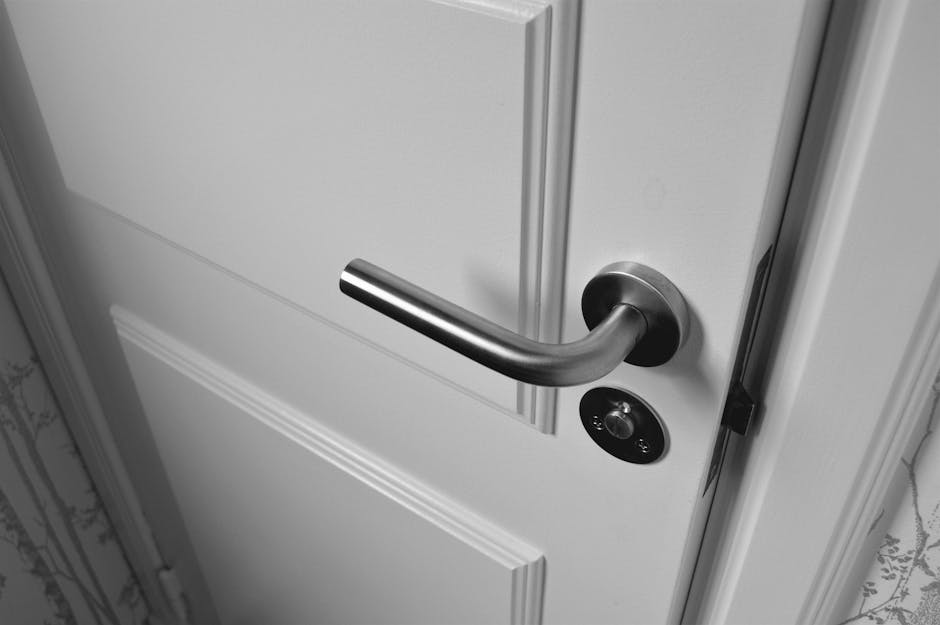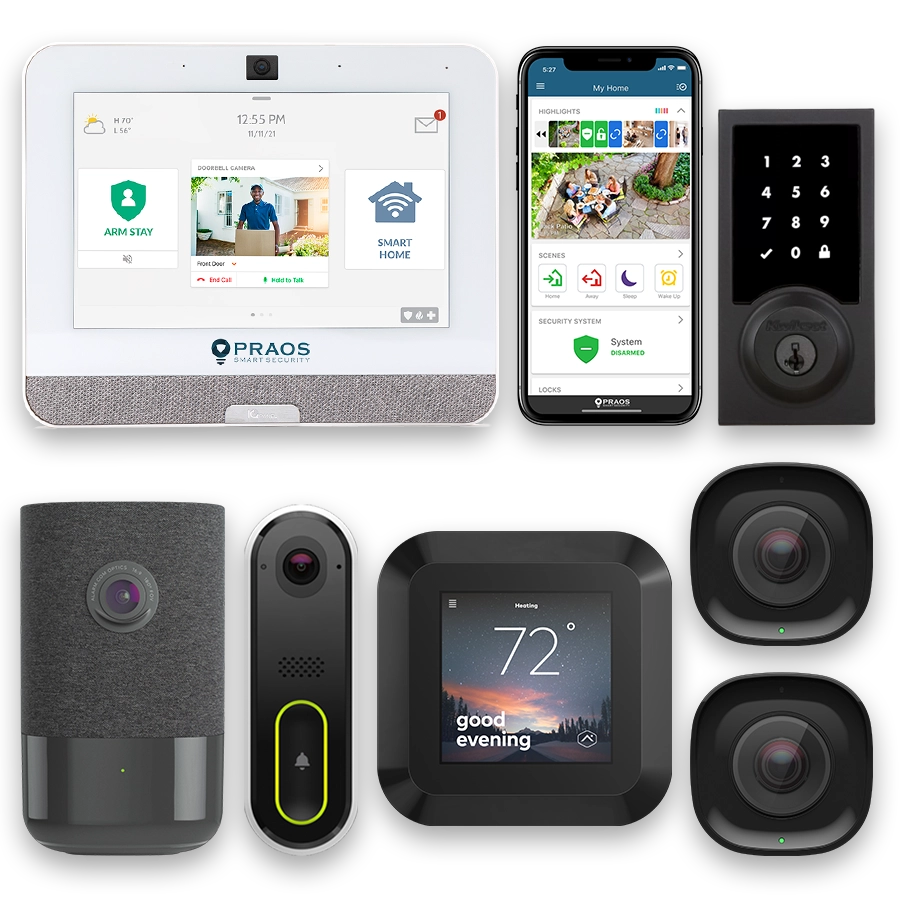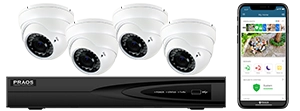- Introduction to Smart Technology Integration in Home Security
- Overview of Traditional Home Security Measures in Richmond
- Benefits of Combining Smart Technology with Traditional Security
- Best Practices for Integrating Smart Technology in Richmond Homes
- Case Studies of Successful Integrations in Richmond Households
- Challenges and Solutions in the Integration Process
- Future Trends in Home Security Technologies and Predictions for Richmond
- Conclusion: Enhancing Home Security through Smart Technology Integration
Introduction to Smart Technology Integration in Home Security
The evolution of home security systems has seen a significant transformation with the advent of smart technology. Richmond, like many other cities, is witnessing an increasing interest in integrating these advanced technologies with traditional security measures. This combination aims to enhance the overall security and safety of homes, providing homeowners with better peace of mind.
Smart technology in home security encompasses a range of devices and systems designed to provide real-time monitoring, control, and automation. These technologies typically include smart cameras, doorbells, locks, sensors, alarms, and integrated home security systems. They offer features such as remote access, real-time notifications, and advanced analytics. Additionally, the use of mobile apps and cloud services enables homeowners to manage and monitor their security systems from virtually anywhere.
In Richmond, there is a noticeable trend toward embracing these modern solutions. According to a report by Statista, the adoption rate of smart home devices in the United States is expected to grow steadily. As of 2022, it was estimated that approximately 32.4% of households in the U.S. are equipped with smart home devices, with projections indicating this number will continue to rise in the coming years.
One of the primary motivations for integrating smart technology with traditional home security is the added layer of protection it offers. Traditional measures such as locks, alarms, and security personnel have been the cornerstone of home security for many years. However, the integration of smart technology can significantly enhance the effectiveness of these measures by providing real-time data and instant alerts, thereby allowing for a quicker response to potential threats.
The Richmond Police Department encourages residents to adopt smart home security measures as a complement to traditional systems. They highlight that the use of smart devices can aid in crime prevention and investigation. For instance, smart cameras can capture high-resolution footage that can be crucial in identifying suspects or providing evidence in the event of a break-in.
Moreover, the convenience and ease of use associated with smart technologies make them an attractive option for many homeowners. Features such as remote locking and unlocking of doors, real-time surveillance through smart cameras, and instant notifications of any suspicious activity ensure that homeowners are always in control of their security, regardless of their physical location.
In summary, the integration of smart technology with traditional home security measures in Richmond reflects a broader trend towards advanced, responsive, and comprehensive security solutions. As the adoption of these technologies continues to grow, it is essential for homeowners to understand the benefits and best practices associated with their use, ensuring that they maximize the potential of their security systems to protect their homes and loved ones effectively.
Overview of Traditional Home Security Measures in Richmond
Traditional home security measures have long been the first line of defense for households in Richmond. These measures range from physical deterrents to passive surveillance systems, each playing a vital role in ensuring the safety and security of residential properties.
1. Physical Security Measures
Physical security measures are designed to prevent unauthorized entry and include various strategies and installations:
- Locks and Deadbolts: Quality locks and deadbolts on doors and windows are fundamental for securing entry points.
- Security Doors and Bars: Reinforced doors and window bars provide an added layer of physical barrier.
- Fencing and Gates: Properly constructed fences and locking gates can discourage intruders from attempting to approach the property.
2. Security Lighting
The use of exterior lighting, such as motion sensor lights, is a common approach to deter potential intruders:
- Motion-Activated Lights: These lights switch on when movement is detected, increasing visibility and making it difficult for intruders to go unnoticed.
- Timed Lighting: Automated lighting systems that activate during certain hours create the impression of occupancy, even when the home is empty.
3. Alarm Systems
Traditional alarm systems typically include sensors and auditory alarms to alert homeowners and neighbors of unauthorized entry:
- Door and Window Sensors: These sensors trigger an alarm when doors or windows are opened forcibly.
- Motion Detectors: Placed within the home, these detectors can sense movement and activate an alarm if motion is detected in secured areas.
4. Surveillance Cameras
Surveillance systems are another cornerstone of traditional home security, offering visual monitoring and recordings:
- CCTV Cameras: Closed-circuit television cameras are positioned to surveil various parts of the property, providing continuous monitoring and recording of activities.
- Dummy Cameras: While non-functional, these cameras serve as psychological deterrents by creating the appearance of active surveillance.
5. Community Based Security Programs
Neighborhood watch programs and other community-based security initiatives enhance the safety of residential areas through collective vigilance and cooperation:
- Neighborhood Watch: Residents collaborate to monitor and report suspicious activities, enhancing communal security efforts.
- Security Patrols: Some communities hire private security firms to conduct regular patrols, providing an additional security layer.
6. Limitations of Traditional Security Measures
While traditional security measures form a solid foundation, they do have their limitations:
- Reactive Nature: Traditional measures often respond to breaches rather than preventing them entirely.
- Limited Connectivity: Systems may lack the interconnected capabilities required for comprehensive real-time monitoring and alerts.
- Maintenance and Upkeep: Physical installations and mechanical systems can degrade over time, requiring regular maintenance and updates.
Understanding the existing frameworks of traditional home security measures is crucial for effectively integrating smart technology, ensuring that homeowners in Richmond can benefit from enhanced, cohesive security strategies.
Benefits of Combining Smart Technology with Traditional Security
Combining smart technology with traditional home security measures has become an increasingly popular approach for homeowners in Richmond. This integrated method provides several benefits that can greatly enhance the overall security of a residence. At the forefront of this integration is Praos, a leading local Richmond home security company known for its commitment to ensuring the safety of families and homes.
Enhanced Security Coverage
One of the primary benefits of merging smart technology with traditional security measures is the enhanced coverage it offers. Traditional systems such as locks, alarms, and surveillance cameras provide a solid foundation. However, integrating smart technology introduces additional layers of security including real-time monitoring, remote access, and immediate alerts to potential threats. This comprehensive approach ensures that every aspect of home security is addressed.
Convenience and Control
With the smart home systems offered by Praos, homeowners have the convenience and control of their security systems right at their fingertips. Through a single connected app, users can manage security, automation, and surveillance no matter where they are. This not only provides greater peace of mind but also allows for quick responses to any security breaches or emergencies.
Cost-Effectiveness
Integrating smart technology with traditional security measures can also be cost-effective. Praos offers new customers free equipment and free installation with their monitored new system plan. Additionally, with rates starting at just $19.95 per month, it becomes an affordable solution for many Richmond homeowners looking to enhance their security without breaking the bank.
Customization and Flexibility
Every home has unique security needs, and Praos recognizes this by offering customized smart home systems tailored to individual requirements and budgets. This flexibility ensures that homeowners get the most suitable security measures for their specific situations, combining traditional and smart technologies in the most effective ways possible.
Benefits Overview Table
| Benefit | Description |
|---|---|
| Enhanced Security Coverage | Combines traditional and smart security measures for comprehensive protection. |
| Convenience and Control | Single app management for remote access and real-time monitoring. |
| Cost-Effectiveness | Free equipment and installation with affordable monthly rates starting at $19.95. |
| Customization and Flexibility | Tailored security systems based on individual needs and budgets. |
The combination of smart technology with traditional home security measures undeniably offers a multitude of benefits for homeowners in Richmond. With expert local services from Praos, these benefits are not only accessible but also customizable, making it easier than ever to protect homes and families effectively.
Best Practices for Integrating Smart Technology in Richmond Homes
When integrating smart technology with traditional home security measures in Richmond, homeowners can ensure an effective and seamless transition by following a set of best practices. These strategies aim to maximize the benefits while minimizing potential challenges, enhancing overall home security.
1. Begin with a Comprehensive Security Assessment
Before implementing any new technology, conduct a thorough assessment of your current security setup. Identify areas where traditional measures might be lacking and determine how smart technology can enhance overall protection. This might include evaluating entry points, reviewing existing alarm systems, and assessing environmental factors specific to Richmond.
2. Choose Compatible and Scalable Products
Opt for smart security devices that are compatible with your existing system and can be easily scaled up as needed. This ensures that you can integrate new devices seamlessly without having to overhaul your entire security setup. Look for products with good integration reviews and support for expansions, such as additional cameras or sensors.
3. Prioritize High-Risk Areas
Focus on securing high-risk areas first. This typically includes entry points like doors and windows, as well as areas with valuable assets. Installing smart locks, cameras, and motion detectors in these locations can significantly enhance security. Additionally, ensure that these devices are connected to a central hub for coordinated monitoring and response.
4. Regular Maintenance and Updates
Regularly maintain your security systems and keep all smart devices updated with the latest firmware. This practice not only optimizes performance but also patches any security vulnerabilities. Create a schedule for routine checks and updates to ensure that all components are functioning correctly.
5. Educate Household Members
Ensure that all household members are familiar with the new smart security systems. Provide training on how to use the devices, respond to alerts, and manage emergency situations. This education helps in making the system more effective as everyone is aware of their roles and responsibilities.
6. Leverage Professional Installation and Monitoring Services
While DIY installations are possible, consider using professional services for installing smart security systems. Professionals can ensure that devices are correctly set up and integrated with existing systems. Additionally, subscribing to professional monitoring services can provide an extra layer of security, especially when you are away from home.
7. Ensure Robust Internet Security
Smart security systems often rely on internet connectivity, making your network security critical. Implement strong passwords, use encrypted networks, and consider adding a VPN for enhanced security. Regularly monitor your network for any unauthorized access or unusual activity.
8. Review and Update Policies Regularly
Stay informed about the latest developments in both traditional and smart security measures. Regularly review and update your security policies to adapt to new threats and advancements in technology. This proactive approach helps in maintaining a robust and effective security system.
By following these best practices, Richmond homeowners can effectively integrate smart technology with traditional security measures, creating a more secure and resilient home environment.
Case Studies of Successful Integrations in Richmond Households
Several Richmond households have successfully integrated smart technology with traditional home security measures, demonstrating the effectiveness and benefits of such integrations. By examining these cases, one can understand the practical applications and the improvements in security and convenience experienced by residents.
Enhanced Surveillance and Monitoring
One example involves homes equipped with traditional CCTV systems that have been upgraded with smart cameras. These smart cameras offer high-definition video, motion detection, and night vision capabilities, allowing homeowners to monitor their property remotely via smartphone apps. The seamless integration with existing security systems ensures an uninterrupted security workflow while providing advanced monitoring features.
Improved Access Control
Another successful integration can be found in households that have combined traditional door locks with smart locks. These smart locks allow for keyless entry through smartphone apps, biometric recognition, or PIN codes. Additionally, they can send real-time notifications about lock and unlock events, enhancing control over who enters the home. Implementing smart locks alongside traditional locks adds multiple security layers, making unauthorized access more difficult.
Integration of Smart Alarms with Traditional Systems
Richmond’s residents using traditional burglar alarm systems have enhanced their setup with smart alarm features. Smart alarms can be controlled remotely and integrated with other smart devices, such as lights and door sensors. This integration ensures that when an alarm is triggered, lights can turn on automatically, or specific doors can be locked, providing a coordinated response to potential threats.
Community-Based Benefits
Some Richmond’s neighborhoods have adopted community-based smart security systems. These systems allow neighbors to share security camera feeds and receive alerts about suspicious activities within the area. This communal approach enhances vigilance and fosters a greater sense of security among residents. Traditional neighborhood watch programs augmented with smart technology enable a more proactive and coordinated community safety effort.
Energy Efficiency and Cost Savings
Integrating smart thermostats and lighting systems with security measures has shown to increase energy efficiency and reduce costs. For instance, smart thermostats can adjust the home’s temperature based on occupancy, and smart lighting can be programmed to turn off when no one is home. These integrations provide added convenience and contribute to a more sustainable household.
Challenges and Solutions in the Integration Process
Integrating smart technology with traditional home security measures in Richmond comes with its set of challenges and potential solutions, each crucial for ensuring effective and efficient security systems. Understanding these challenges and addressing them appropriately can significantly enhance the seamless integration of both security paradigms.
1. Compatibility Issues:One of the primary challenges is ensuring that new smart technology components are compatible with existing traditional security systems. Many older systems may not have the capability to interface with modern smart devices, requiring upgrades or replacement.
Solution: Homeowners should consult with security experts who can recommend compatible smart devices or suggest necessary system upgrades. Often, adopting interoperable platforms such as Z-Wave or Zigbee that support communication between new and old devices can mitigate these issues.
2. Installation and Maintenance Complexity:The integration process can be complex, especially for those without technical expertise. Missteps during installation can lead to vulnerabilities or system failures.
Solution: Hiring professional installers ensures that systems are correctly set up and optimized. Additionally, user-friendly apps and platforms that offer guided setup, real-time diagnostics, and customer support can simplify maintenance and operation for homeowners.
3. Data Privacy and Security Concerns:Smart security systems often transmit data over the internet, raising concerns about data breaches and unauthorized access. Ensuring that these systems are secure is vital.
Solution: Employing strong encryption protocols, regular software updates, and robust user authentication methods can help safeguard data. Users should also configure settings to limit data sharing and choose reputable service providers with solid privacy policies.
4. Reliability of Smart Devices:Smart devices depend on internet connectivity, which may not always be stable. Power outages or disruptions in internet service can temporarily disable smart security components.
Solution: Investing in backup power solutions like Uninterruptible Power Supplies (UPS) and ensuring a reliable internet connection with a backup option can mitigate this risk. Additionally, integrating offline-capable traditional security elements remains essential.
5. Cost Considerations:The cost of integrating smart technology with traditional security systems can be a deterrent for some homeowners. Budget constraints might prevent full-scale implementation.
Solution: Homeowners should assess their security needs and prioritize critical areas for integration. Consider phased implementation to spread costs over time, focusing on essential components first.
Overall, successfully integrating smart technology with traditional home security measures in Richmond necessitates careful planning, professional guidance, and ongoing attention to security and privacy. By addressing these challenges with practical solutions, homeowners can achieve a robust and reliable security setup that leverages the best of both technologies.
Future Trends in Home Security Technologies and Predictions for Richmond
As the landscape of home security continues to evolve, several future trends are emerging that promise to shape how Richmond’s residents protect their homes. Understanding these trends can help homeowners and security professionals anticipate changes and make informed decisions about integrating new technologies.
Artificial Intelligence and Machine Learning
One significant trend is the incorporation of Artificial Intelligence (AI) and Machine Learning (ML) in home security systems. AI can enhance the functionality of security systems by enabling them to learn from patterns and improve over time. For example, AI-powered cameras can distinguish between potential threats and benign activities, reducing false alarms. Meanwhile, ML algorithms can predict potential security breaches based on historical data.
Internet of Things (IoT) Integration
The Internet of Things (IoT) is another trend transforming home security. IoT devices, such as smart locks, sensors, and cameras, can communicate with each other, offering a cohesive security solution. These devices can be controlled remotely through smartphones or central hubs, enabling real-time monitoring and quick responses to security breaches.
Enhanced Cybersecurity Measures
As more devices connect to the internet, cybersecurity becomes increasingly critical. Future home security solutions will likely incorporate robust encryption protocols and regular software updates to mitigate the risk of cyberattacks. Homeowners must also be vigilant about their digital security, such as using strong, unique passwords and enabling two-factor authentication.
Biometric Authentication
Biometric authentication is gaining traction as a reliable security measure. Technologies such as facial recognition, fingerprint scanning, and voice recognition offer enhanced security by ensuring that only authorized individuals can access certain areas of a home. These systems are becoming more affordable and accessible, making them a viable option for many Richmond households.
Integration with Smart Home Ecosystems
Future home security systems will likely offer seamless integration with smart home ecosystems. This means that security devices will work in concert with other smart home technologies, such as lighting, heating, and entertainment systems. For instance, automated lighting can deter intruders by simulating occupancy when homeowners are away.
Predictive Maintenance
Another emerging trend is predictive maintenance. Smart security systems will soon be able to notify homeowners of potential issues before they arise, such as a failing component or a need for a software update. This proactive approach can prevent system failures and ensure continuous protection.
Advancements in Remote Monitoring
Advancements in remote monitoring technologies will continue to evolve, providing homeowners with real-time access to their security systems from anywhere in the world. High-definition video feeds, instant alerts, and remote control capabilities ensure that homeowners are always connected to their home’s security.
These future trends highlight the rapid progression of home security technologies. By staying informed and adopting these emerging solutions, Richmond’s residents can enhance the safety and security of their homes, ensuring peace of mind in an increasingly connected world.
Conclusion: Enhancing Home Security through Smart Technology Integration
In conclusion, integrating smart technology with traditional home security measures provides a robust and comprehensive approach to safeguarding homes in Richmond. This combination leverages the strengths of both technologies to create a layered security system that is difficult to breach.
The advancements in smart technology offer features such as real-time alerts, remote monitoring, and automation that traditional security systems lack. By incorporating these features, homeowners can stay informed and respond promptly to potential threats, regardless of their location. Additionally, smart devices often integrate seamlessly with conventional security measures, enhancing functionality and providing a more holistic security solution.
The data supports the effectiveness of this integration. According to a study by Statista, the smart home market in the United States is expected to reach over $53 billion by 2023, reflecting a growing trend toward smart security solutions. Moreover, a report by the FBI indicates that homes without any form of security system are 300% more likely to be broken into, emphasizing the importance of comprehensive home security.
To maximize the benefits of this integration, it is essential for homeowners to adopt best practices such as regular maintenance, updating software, and understanding the functionalities of their security systems. This proactive approach ensures that both smart and traditional systems operate at peak efficiency, providing optimal protection for the residence.
In summary, the integration of smart technology with traditional home security measures represents the future of home protection in Richmond. By combining the strengths of both systems, homeowners can achieve a higher level of security, peace of mind, and convenience. As technology continues to evolve, it is crucial to stay informed and adaptable, ensuring that home security measures remain effective against emerging threats.






